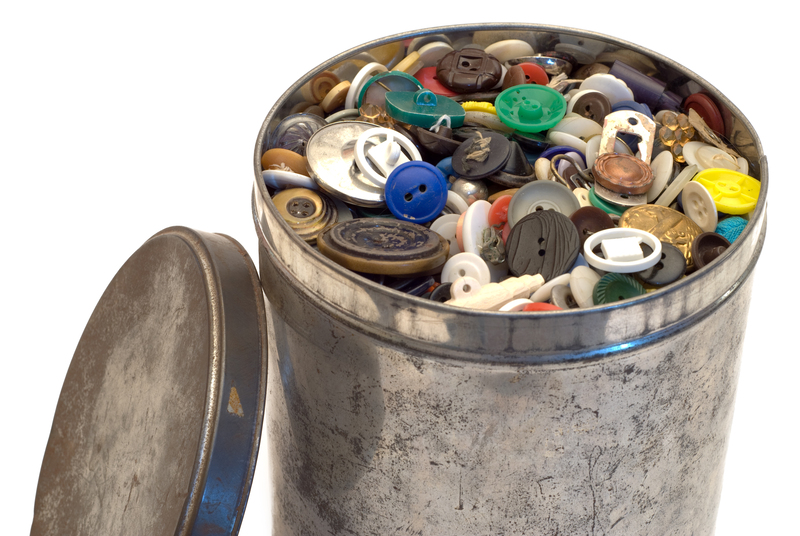The Anatomy of Hazardous Waste: Dangerous Elements Exposed
Hazardous waste is an ever-present issue that affects global ecosystems, human health, and the sustainability of our environment. Understanding the anatomy of hazardous waste is essential for industry professionals, policymakers, and the general public. In this comprehensive article, we delve into the dangerous elements that make up hazardous waste, explore its sources, health impacts, and management strategies. By exposing the key ingredients and behaviors of hazardous substances, we can develop a roadmap to a safer and cleaner world.

What is Hazardous Waste?
Hazardous waste refers to any material that poses significant threats to human health or the environment if not properly managed. Its composition may be solid, liquid, gaseous, or even slurry. The U.S. Environmental Protection Agency (EPA) defines hazardous waste as substances that are ignitable, corrosive, reactive, or toxic. The classification of waste as hazardous may depend on its origin, physical or chemical properties, or the presence of certain dangerous elements.
Key Hazardous Waste Characteristics
- Ignitability: Materials that catch fire easily (e.g., solvents, fuels)
- Corrosivity: Substances that can corrode metals or damage living tissue (e.g., acids, bases)
- Reactivity: Items that undergo violent chemical reactions (e.g., explosives, peroxides)
- Toxicity: Chemicals harmful or fatal to living organisms upon exposure (e.g., heavy metals, pesticides)
The Dangerous Elements in Hazardous Waste
Hazardous waste is comprised of a vast and varied collection of bodily dangerous elements that pose unique risks. Understanding these dangerous constituents is critical to safe handling and disposal. Below, we expose some of the most threatening elements and compounds typically found in hazardous waste streams.
Heavy Metals: The Silent Threat
- Lead (Pb): Common in batteries, paints, and electronic waste. Even low-level exposure can cause neurological damage, especially in children.
- Mercury (Hg): Found in thermometers, fluorescent bulbs, and industrial discharge. It accumulates in the food chain, causing mercury poisoning and affecting the brain & kidneys.
- Cadmium (Cd): Present in batteries, pigments, and plastics. It's highly carcinogenic and causes organ failure over time.
- Arsenic (As): Often a byproduct of mining and pesticide production, arsenic exposure can result in severe skin lesions and cancer.
- Chromium (Cr): Used in metal plating, dyes, and wood preservation, certain forms are known carcinogens and cause respiratory issues.
Organic Chemicals: Persistent and Pervasive
- Polychlorinated Biphenyls (PCBs): Industrial coolants and lubricants banned in many countries, but residues persist in old equipment and soil.
- Pesticides: Chemicals like DDT linger in the environment, poisoning wildlife and disrupting hormone systems in humans.
- Benzene: Used in the chemical industry, benzene is notorious for causing leukemia and other blood disorders.
- Phthalates: Plasticizers in consumer goods, these compounds affect reproductive health and are endocrine disruptors.
- Solvents (Toluene, Xylene): Used in paints and cleaners, these rapidly evaporating chemicals irritate the lungs and central nervous system.
Reactive and Corrosive Compounds
- Peroxides: Extremely reactive and can cause explosions under the right conditions.
- Acids (Sulfuric, Hydrochloric): Used in industry, accidental releases cause burns, respiratory damage, and environmental devastation.
- Bases (Sodium hydroxide, Ammonia): Fatal if ingested or inhaled; they damage skin, eyes, and mucous membranes.
Sources of Hazardous Waste: Where Does It Come From?
The origin of hazardous waste is as varied as its composition. Modern society, with its relentless industrial and technological progress, contributes to a steady stream of dangerous refuse. Let's uncover the main sources.
Industrial and Manufacturing Facilities
- Metal plating industries (chromium, lead, and cadmium residues)
- Chemical production plants (reactive chemicals, solvents, PCBs)
- Textile and dye factories (organic toxins, metallic dyes)
Healthcare and Laboratories
- Hospitals and clinics (infectious sharps, pharmaceutical waste, mercury instruments)
- Research labs (reactive chemicals, radioactive isotopes, solvents)
Municipal and Household Waste
- Battery and electronics disposal (heavy metals, persistent organics)
- Paints, cleaners, and automotive fluids containing volatile organic compounds (VOCs)
- Old cosmetics and personal care products harboring endocrine disruptors
Agricultural Activities
- Pesticide and herbicide residues
- Veterinary medicines and chemicals used in animal husbandry
Mining, Oil, and Gas Sectors
- Tailings and sludges laced with arsenic, cadmium, and mercury
- Oil drilling muds and produced water containing radioactive material
Health Risks of Exposure to Hazardous Waste
Exposure to the elements of hazardous waste can have devastating health impacts. These risks are not limited to those working directly with waste; communities near disposal sites and users of contaminated water, soil, or air are all vulnerable. Let us examine the most significant health consequences.
Acute Toxicity
- Skin and eye burns from corrosive substances
- Respiratory distress from inhalation of solvents, acids, or reactive gases
- Neurological damage due to acute exposure to mercury, lead, or solvents
Chronic Effects
- Cancer: Heavy metals like cadmium and chromium, and organic compounds such as benzene and PCBs are confirmed carcinogens.
- Developmental disorders: Prenatal exposure to hazardous elements can impair cognitive and physical growth in children.
- Kidney and liver damage: Chronic ingestion of contaminated water or food can result in organ failure.
- Endocrine disruption: Persistent organic pollutants impair hormonal balance, affecting fertility and immune function.
Environmental Impact: Hazardous Waste in Nature
The dangerous elements of hazardous waste do not remain confined to their storage or disposal sites. Over time, they seep into soils, waterways, and even the atmosphere, causing cascading effects in food webs and ecosystems.
Water Pollution
- Leaching into groundwater: Heavy metals and solvents from landfills contaminate drinking water supplies.
- Eutrophication and algal blooms: Certain waste elements feed harmful algal growth, depleting oxygen and killing aquatic life.
Soil Contamination
- Persistent pollutants: Compounds like PCBs and pesticides remain in soil for decades, harming crops and soil organisms.
- Bioaccumulation: Toxins build up in plant and animal tissues, entering the food chain and posing risks to higher organisms, including humans.
Airborne Hazards
- Volatile organics: Many hazardous waste elements evaporate, polluting air quality and increasing cancer risk.
- Incineration byproducts: Uncontrolled burning of hazardous materials releases dioxins, furans, and heavy metals into the atmosphere.
Detecting and Measuring Hazardous Waste Elements
Proper management begins with the identification and quantification of dangerous elements present in hazardous waste. Modern analytical technologies provide the precision required to expose these threats and formulate effective mitigation strategies.
Sampling and Analysis Techniques
- Atomic Absorption Spectrometry (AAS): Ideal for detecting heavy metals such as lead, mercury, and cadmium.
- Gas Chromatography-Mass Spectrometry (GC-MS): Used to separate and identify volatile and semi-volatile organic compounds including pesticides and PCBs.
- Inductively Coupled Plasma (ICP): Allows for multi-element analysis with high sensitivity, ideal for tracking a range of metallic contaminants.
- Toxicity Characteristic Leaching Procedure (TCLP): A standardized method to assess the potential for harmful elements to leach from waste material.
Safe Management and Disposal of Hazardous Waste
The proper handling and disposal of hazardous waste is imperative to prevent exposure to dangerous waste elements. Regulatory frameworks and best practices guide industries and communities in managing these risks.
Regulatory Frameworks
- Resource Conservation and Recovery Act (RCRA): Provides the basic federal requirements for hazardous waste management in the U.S.
- Basel Convention: International treaty aiming to reduce hazardous waste movements across borders, specifically from developed to less developed countries.
- European Union Waste Framework Directive: Sets the basis for hazardous waste classification and disposal in EU countries.
Treatment and Disposal Technologies
- Incineration: High-temperature combustion for organic hazardous wastes, with proper emission controls to prevent air pollution.
- Stabilization and solidification: Immobilizes hazardous constituents in a matrix to prevent leaching.
- Secure landfilling: Engineered landfills with liners and leachate collection systems protect groundwater from contamination.
- Chemical and biological remediation: Advanced technologies use microbes or chemical agents to neutralize toxic elements in soil and water.
Emerging Trends
- Zero-waste and circular economy initiatives: Reducing hazardous waste generation through recycling and sustainable design.
- Advanced sensing technologies: Real-time detection of dangerous elements to prevent releases and guide remediation efforts.
- Public awareness and involvement: Community engagement in hazardous waste monitoring and decision-making.

Prevention: Reducing Hazardous Waste at Source
The most effective way to eliminate the dangers of hazardous waste elements is to prevent their creation. Today, organizations and individuals play pivotal roles in minimizing risks at every step:
- Green chemistry: Designing chemicals and processes that avoid hazardous substance generation.
- Product stewardship: Manufacturers take responsibility for the end-of-life management of their products, especially electronics, batteries, and chemicals.
- Household hazardous waste collections: Community programs that collect and manage paints, cleaners, and other dangerous goods safely.
- Consumer choices: Choosing eco-friendly, non-toxic products helps reduce the overall burden of hazardous waste.
With global awareness increasing and technological solutions evolving, the anatomy of hazardous waste is no longer a mystery. Through continued research, regulation, and responsible behavior, we can expose and neutralize these dangerous elements for a safer future.
Conclusion: Toward a Cleaner and Safer World
The anatomy of hazardous waste is a complex composition of chemical, physical, and biological threats. Exposing the dangerous elements contained within is the first step in preventing catastrophic health and environmental consequences. Whether you are an industrial stakeholder, a policymaker, or a conscious consumer, your actions matter. By understanding the origin, behavior, and fate of hazardous waste, and embracing safer alternatives and disposal methods, we can collectively minimize the risks these dangerous elements present. The future depends on transparency, innovation, and an unwavering commitment to protect our planet for generations to come.